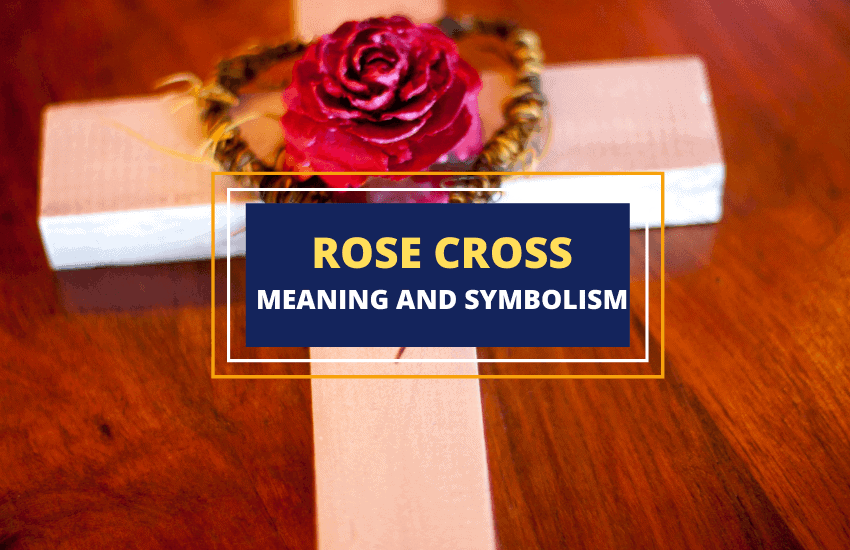
Table of Contents
The Rose Cross, otherwise known as the Rosy Cross and the Rose Croix, is a symbol that has been around for hundreds of years. While it closely resembles the Latin Cross that has long been a universal symbol of Christianity, the rich history of the Rose Cross makes it truly unique in its own right. Different meanings have been associated with it over the years, with each interpretation highly dependent on its source.
Read on to learn more about the history of the Rose Cross and what it actually means.
The History of the Rose Cross
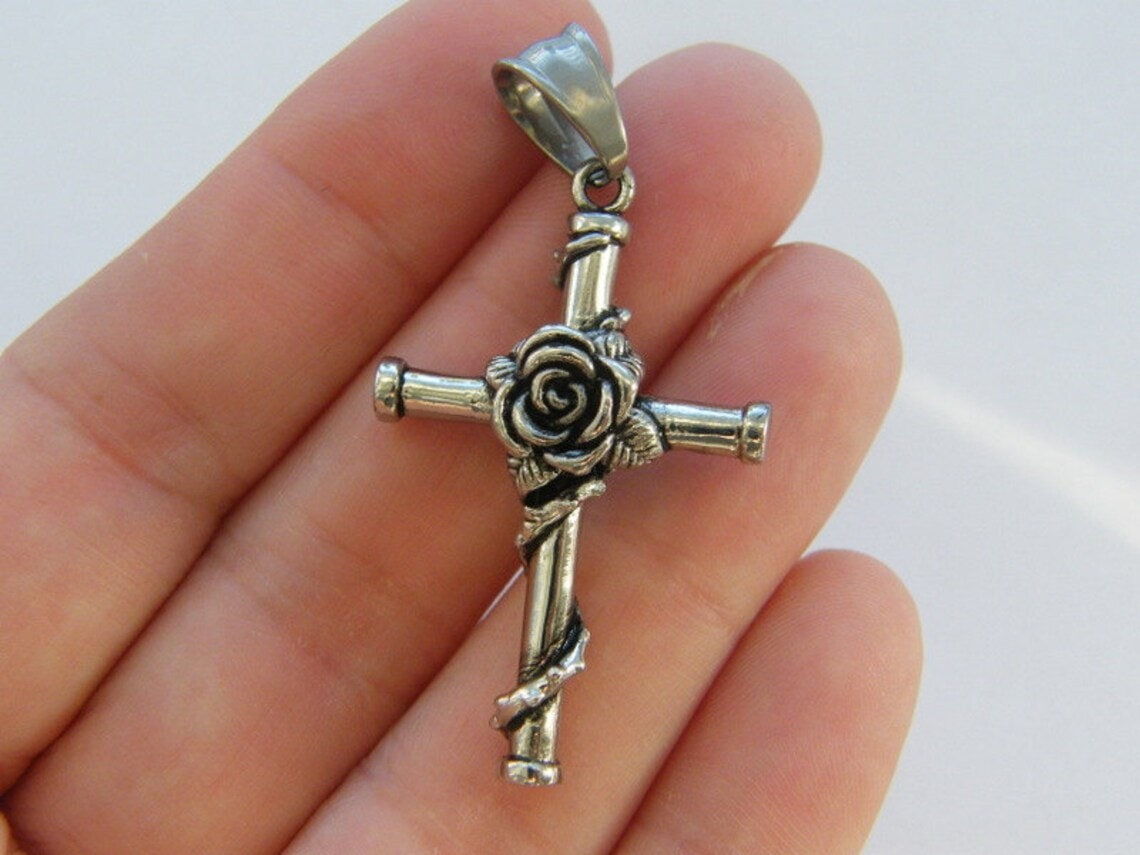
The Rose Cross features a cross with a red, white, or golden rose at its center. The design is quite minimalist and symbolizes the teachings of western esotericism based on Christian tenets.
Over the years, several organizations have used the Rose Cross to represent their beliefs and principles. To understand how this symbol managed to keep its status, it would help to have a better idea of how Rosicrucianism and its related schools of thought originated.
Early Origins of the Rose Cross
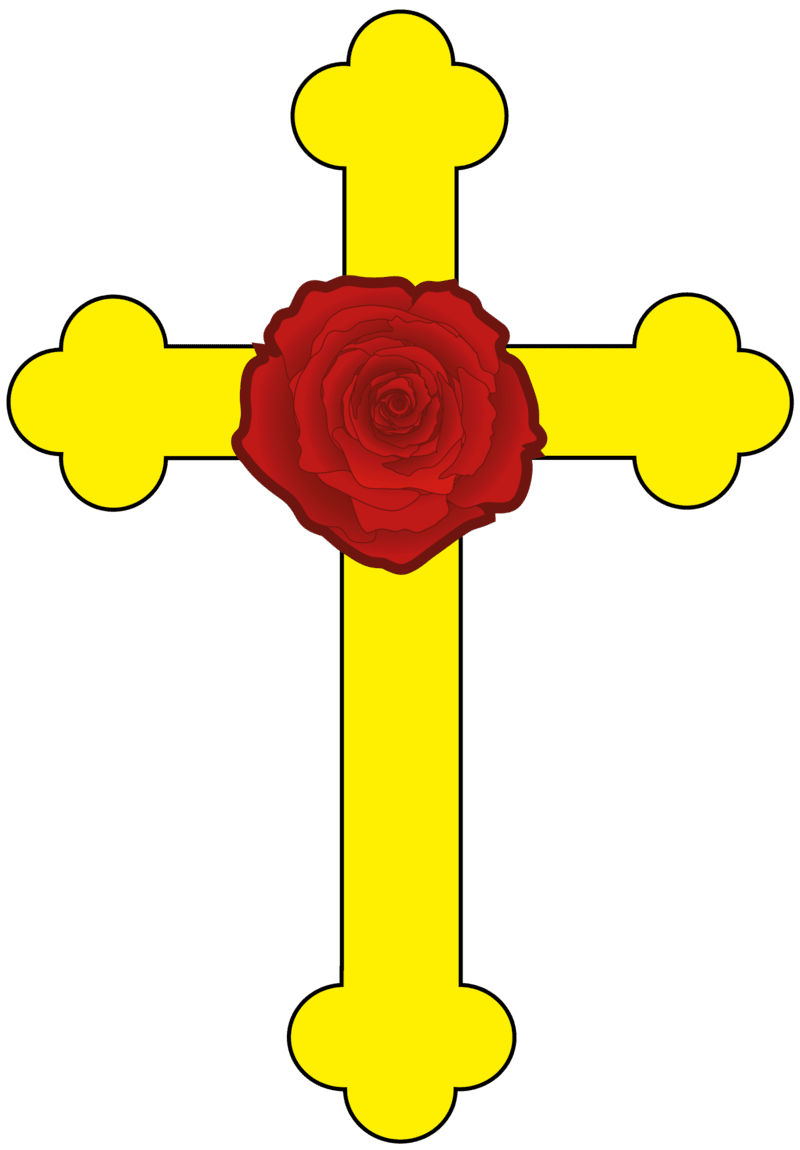
Rosicrucianism is a cultural and spiritual movement that led to the formation of a family of secret societies in the early 17th Century.
Practicing a mysterious mix of occult traditions and Christian mysticism, its followers and sages eventually were known as an Invisible College because of all the secrecy behind their esoteric practices. They promoted the Esoteric Christian viewpoint and asserted that some doctrines of Christianity can only be understood by people who undergo certain religious rites.
Legend has it that the Rosicrucian Order was first created when Mark, the disciple of Jesus, converted Ormus and his followers. It is said that their conversion led to the birth of the Rosicrucian order because the higher teachings of early Christianity purified Egyptian mysteries.
However, some historians say otherwise, claiming that the Order of the Rose Cross was first founded between the 13th and 14th centuries. A group adopted the name Christian Rosenkreuz, a legendary German aristocrat who was believed to be the allegorical founder of the Rosicrucian Order.
Documents relating to Rosicrucianism state that he discovered esoteric wisdom during a pilgrimage to the East and subsequently founded the Fraternity of the Rose Cross.
The Rise of Rosicrucianism
Two manifestos of Rosicrucianism were published between 1607 and 1616 – the Fama Fraternitatis R.C. (The Fame of the Brotherhood of R.C.) and Confessio Fraternitatis (The Confession of the Brotherhood of R.C.).
Both documents gave rise to the Rosicrucian Enlightenment, which was characterized by the excitement caused by the declaration of a secret brotherhood working to transform the political, intellectual, and religious landscape of Europe.This group was a network of mathematicians, philosophers, astronomers, and professors, some of whom are considered pillars of the early Enlightenment movement.
In 1622, Rosicrucianism reached its height when two posters were put up on the walls of Paris. While the first one announced the existence of deputies of the Higher College of Rose-Croix in the city, the second one talked about how the thoughts attached to the real desire of the seeker would lead to their secret group.
The Symbolism of the Rose Cross
Different interpretations of the Rose Cross stem from the links of Rosicrucianism with other groups such as the Freemasons and the Order of the Golden Dawn. For example, while the Freemasons believed it to represent Eternal Life, followers of the Golden Dawn use it together with other symbols to augment its meaning. Here are some of the most popular meanings assigned to the Rose Cross.
Freemasonry and Rosicrucianism
Several writers and historians have spoken of Freemasonry’s links to Rosicrucianism. One of them was Henry Adamson, a Scottish poet and historian, who wrote a poem suggesting that the connection between Freemasonry and the Rose Cross existed long before the Grand Lodge of England was founded.
Thomas De Quincey, an English writer and literary critic, also made connections between Freemasonry and the Rose Cross. In one of his works, he even went as far as stating that Freemasonry was derived from Rosicrucianism.
Albert Pike, an American author known as the Father of Modern Masonry, also wrote about the symbolism of the Degree of Rose Cross. While he associated the rose cross with the ankh, a symbol ancient Egyptian deities are often depicted with and resembles the hieroglyphic symbols for the word life, he associated the rose with the dawn goddess Aurora, linking it with the Dawn of the First Day or The Resurrection. When the two are combined, they equate to the Dawn of Eternal Life.
The Order of the Golden Dawn
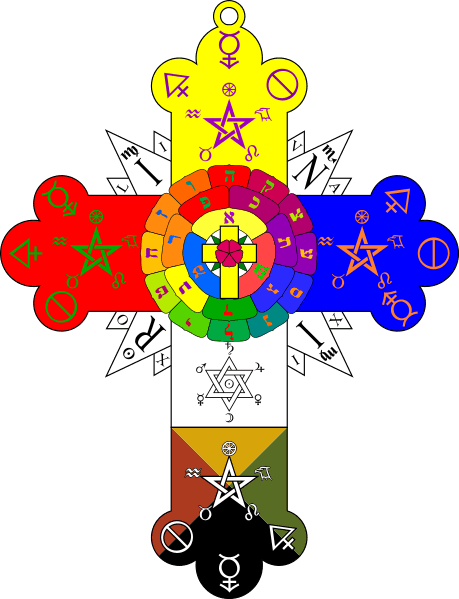
The Hermetic Order of the Golden Dawn was one of the secret societies that stemmed from Rosicrucianism. This group was devoted to the practice and study of metaphysics, the occult, and paranormal activities between the 19th and 20th centuries.
Most of today’s concepts of magic, like Thelema and Wicca, were largely inspired by the Golden Dawn. It’s also interesting to note that its three founders – Samuel Lioddel Mathers, William Robert Woodman, and William Wynn Westcott – were all Freemasons.
This secret society used the rose cross in The Ritual of the Rose Cross, which provided its members with spiritual protection and helped them prepare for meditation. Their veresion of the rose cross contains several symbols, with a rose cross at the center.
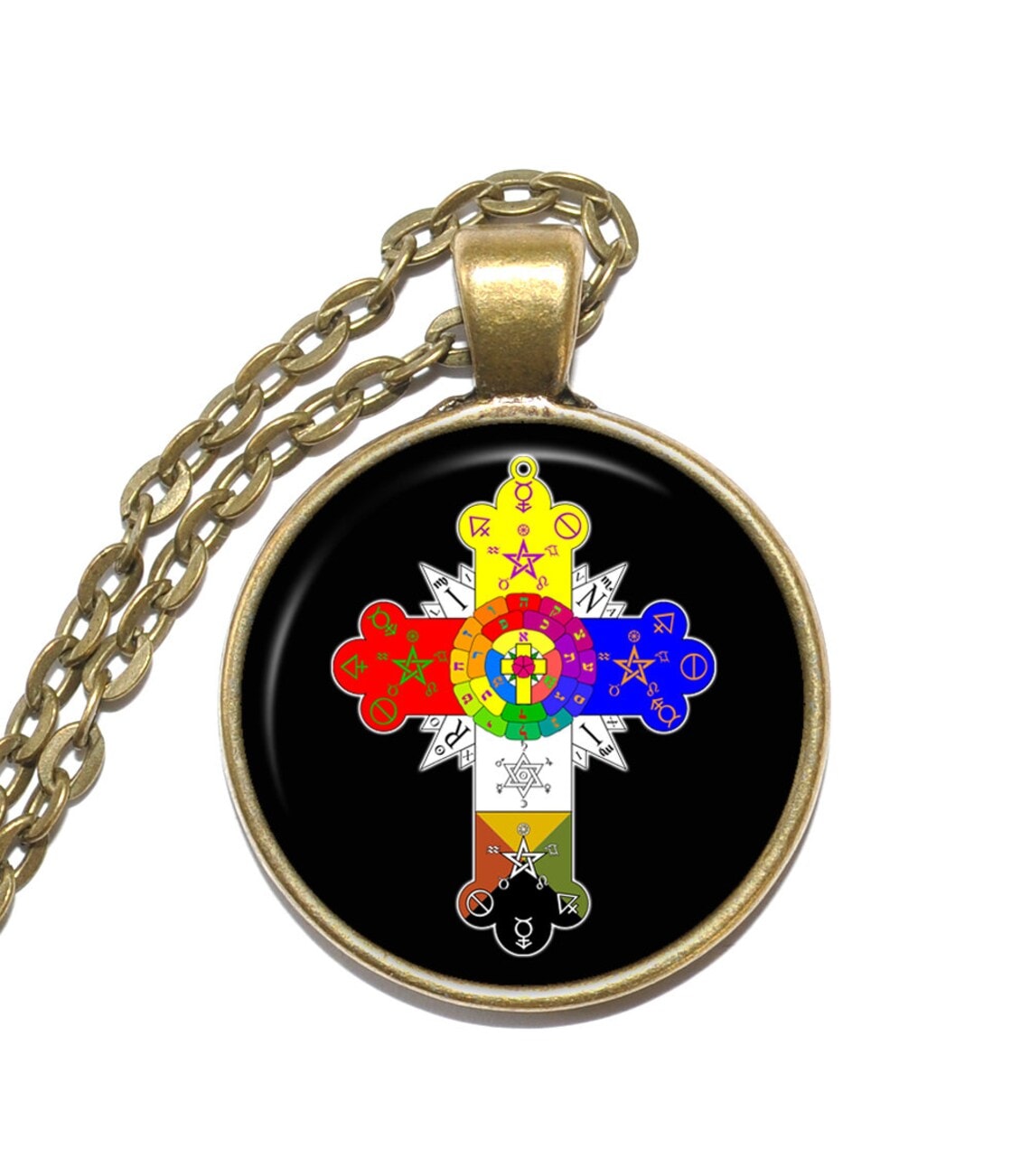
Moreover, Israel Regardie, an English occultist and writer, described how their rose cross contains other symbols that their group considers important. From the planets and the Hebrew alphabet to the Tree of Life and the formula for INRI, each symbol in the Golden Dawn’s Rose Cross bears an important meaning.
Each arm of the cross represents the four elements – air, water, earth, and fire – and is colored accordingly. It also has a small white portion, which contains symbols of the planets and the Holy Spirit. In addition, the petals on its rose stand for the 22 letters of the Hebrew alphabet and the 22 paths on the Tree of Life.
Aside from pentagrams and symbols of the four elements, the Golden Dawn’s rosy cross also features the three alchemical principles of salt, mercury, and sulfur. While salt stands for the physical world, mercury represents the passive female principle being shaped by outside forces, and sulfur symbolizes the active male principle that creates change.
This interesting combination of symbols is believed to be a synthesis of various ideas that embody the work of the Order of the Golden Dawn. As Regardie noted, it somehow reconciles the conflicting and diverse concepts of manhood and divinity.
The Rose Cross Today
Several organizations and schools of thought continue to use the Rose Cross in the present day. One of its modern forms is the Rosie Cross, which is a Rosicrucian Christian symbol that features a white cross with a crown of red roses around a single white rose in its center. A golden star emanates from the cross, which is believed to symbolize the Five Points of Fellowship.
The Ancient and Mystical Order Rosae Crucis (AMORC), one of today’s largest Rosicrucian groups, uses two emblems that both have the Rose Cross. The first is a simple Gold Latin Cross that bears a rose in its center, while the other is an inverted triangle with a Greek cross and a red rose in its center. The Rose Cross symbolizes the challenges and experiences of a life well-lived in both versions. However, one difference between the two is that the one with the golden Latin Cross also symbolizes a person in worship, whose arms are wide open.
Wrapping Up
While different organizations have come up with their own interpretations of the Rose Cross, its mysterious appeal never ceases to amaze. Whether used as a religious, esoteric, or magical symbol, the Rose Cross does its job of communicating the complex yet brilliant ideas of the people who embrace its symbolism.








